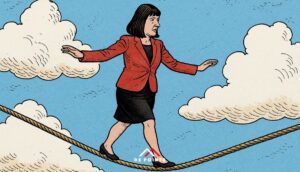Article

On September 15, 2008, the art world witnessed a spectacle that would go down in history: Damien Hirst, one of contemporary art’s most provocative figures, orchestrated an unprecedented solo auction at Sotheby’s in London. Titled “Beautiful Inside My Head Forever,” the sale shattered records, fetching a staggering £111 million (approximately $200 million at the time). What made this event particularly remarkable was not just the amount of money exchanged but the extraordinary context in which it occurred—the same day that Lehman Brothers, one of Wall Street’s largest investment banks, collapsed, triggering a global financial crisis.
This juxtaposition—the most expensive auction ever for a living artist coinciding with the cataclysmic downfall of a financial giant—highlighted the unique resilience of the art market. It served as a striking reminder of art’s peculiar position in the world economy, often moving against the tide of broader financial instability.
The Auction: Breaking Away from Tradition
Damien Hirst was never an artist to avoid the limelight or controversy. Known for his conceptual art and exploration of themes such as life, death, and the passage of time, Hirst has consistently pushed the boundaries of contemporary art. With “Beautiful Inside My Head Forever,” he decided to abandon the conventional gallery system entirely.
For the first time in history, a major artist bypassed galleries and directly sold new works at auction. This decision was a bold statement against the traditional structures of the art world, signalling a shift in how art could be bought and sold. The auction featured 223 lots, including some of Hirst’s most iconic works: the infamous diamond-encrusted skull, “For the Love of God,” and numerous animals suspended in formaldehyde, such as “The Golden Calf,” a bull with golden hooves and horns.
The event attracted buyers worldwide, including art collectors, celebrities, and financiers eager to secure a piece of Hirst’s controversial and captivating works. By the end of the two-day auction, all doubts about the success of such a radical move were silenced—every lot sold, often for more than their high estimates.
A chart comparing the performance of the S&P 500 and the Artprice 100
Art vs. The Financial Market: A Tale of Two Realities
What made Hirst’s auction particularly remarkable was its timing. On the same day as the auction, Lehman Brothers, a titan of global finance, declared bankruptcy. It was a moment that sent shockwaves through markets worldwide, leading to a financial crisis that would ripple through economies for years. Stock markets plummeted, banks went into free fall, and investors scrambled to salvage what they could from the wreckage.
Yet, inside Sotheby’s auction house, a different story unfolded. As the gavel fell on one record-breaking bid after another, it was as if the walls of the auction room provided a sanctuary from the chaos erupting outside. While markets crumbled, the art world flourished—at least for that brief moment. Hirst’s auction defied expectations, showing that art, particularly contemporary art, could exhibit a surprising degree of resilience, even amid financial turmoil.
This dichotomy raises an intriguing question: Why did the art market, and specifically Damien Hirst’s auction, thrive in a moment of economic collapse? One explanation lies in the nature of art itself. Unlike stocks or real estate, art possesses a unique quality—it is not merely a commodity but a repository of cultural, historical, and personal significance. It provides a sense of permanence and timelessness that can offer solace during uncertain times.
Moreover, art can serve as a hedge against inflation and economic downturns for high-net-worth individuals. When traditional markets falter, wealthy collectors often turn to tangible assets, like art, that maintain or even increase in value. In Hirst’s case, his reputation for controversy, coupled with his savvy marketing and branding, created an allure that transcended economic conditions.
The Art World’s Resilience: A Complex Narrative
While the success of Hirst’s auction highlighted art’s resilience, it also underscored the complexities of the art market. The art world is not immune to broader economic forces; in fact, it is deeply intertwined with them. The immediate aftermath of the auction saw a continuation of strong sales, but as the financial crisis deepened, the art market, like all markets, experienced contractions.
Yet, the art market’s capacity to recover and adapt was remarkable. Despite a dip in prices and sales volumes in the years following 2008, by 2011, the market had rebounded significantly. This resilience can be attributed to several factors, including the globalisation of the art market, the growing number of ultra-high-net-worth individuals, and the increasing interest in art as an alternative investment.
A Moment of Reflection
Damien Hirst’s 2008 auction serves as a fascinating case study of art’s ability to withstand economic upheaval. It demonstrated that art, as both a financial asset and a cultural artefact, holds a unique place in our world. While markets may rise and fall, the desire for art, for the human stories it tells, and the emotions it captures, endures.
The 2008 auction is also a reminder that the art world, despite its reputation for exclusivity and glamour, is not disconnected from the broader economic realities. It exists within a complex ecosystem where financial markets, cultural trends, and human psychology intersect.
In the end, the story of Hirst’s auction is not just about one artist’s audacious move to upend the traditional art world, nor is it solely about the extraordinary sums of money exchanged on a day of global financial crisis. It’s about the resilience of art itself—a testament to its enduring value in times of certainty and chaos. While the financial world buckled under the weight of its own excesses, the art world, at least for a moment, stood firm, proving that creativity and expression are currencies that never truly lose their worth.





